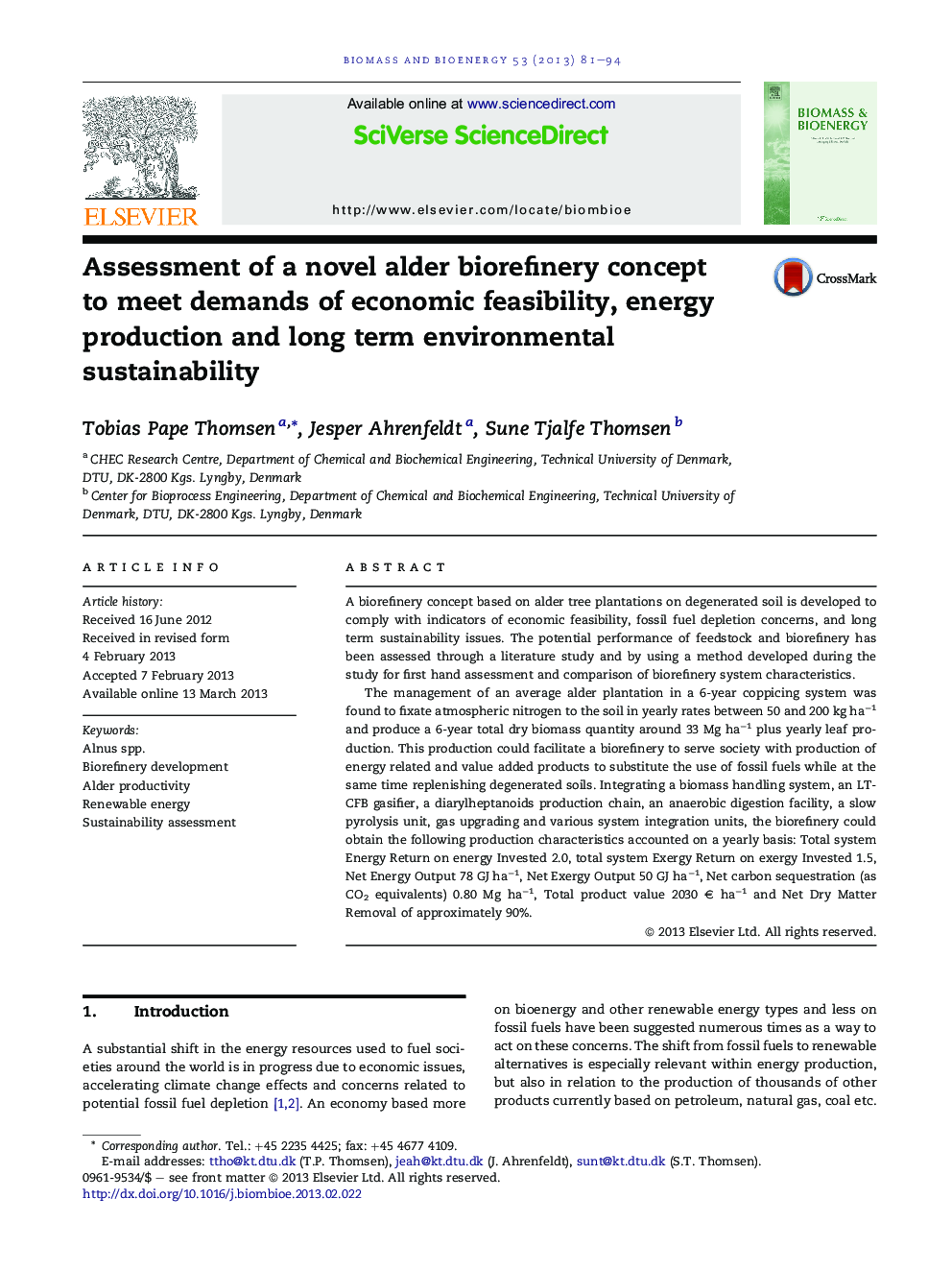| Article ID | Journal | Published Year | Pages | File Type |
|---|---|---|---|---|
| 7065557 | Biomass and Bioenergy | 2013 | 14 Pages |
Abstract
The management of an average alder plantation in a 6-year coppicing system was found to fixate atmospheric nitrogen to the soil in yearly rates between 50 and 200 kg haâ1 and produce a 6-year total dry biomass quantity around 33 Mg haâ1 plus yearly leaf production. This production could facilitate a biorefinery to serve society with production of energy related and value added products to substitute the use of fossil fuels while at the same time replenishing degenerated soils. Integrating a biomass handling system, an LT-CFB gasifier, a diarylheptanoids production chain, an anaerobic digestion facility, a slow pyrolysis unit, gas upgrading and various system integration units, the biorefinery could obtain the following production characteristics accounted on a yearly basis: Total system Energy Return on energy Invested 2.0, total system Exergy Return on exergy Invested 1.5, Net Energy Output 78 GJ haâ1, Net Exergy Output 50 GJ haâ1, Net carbon sequestration (as CO2 equivalents) 0.80 Mg haâ1, Total product value 2030 â¬Â haâ1 and Net Dry Matter Removal of approximately 90%.
Related Topics
Physical Sciences and Engineering
Chemical Engineering
Process Chemistry and Technology
Authors
Tobias Pape Thomsen, Jesper Ahrenfeldt, Sune Tjalfe Thomsen,
